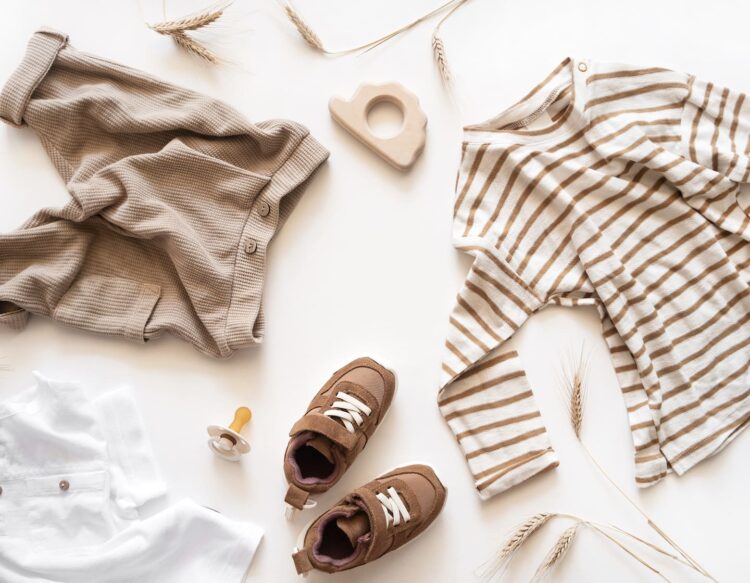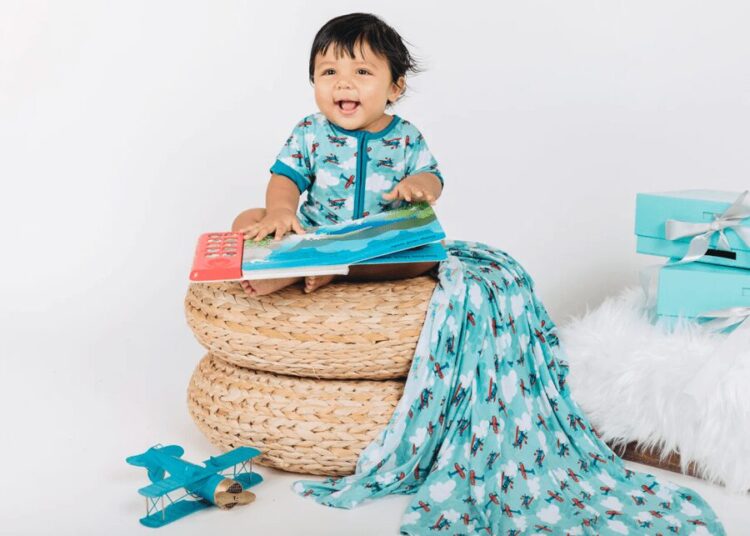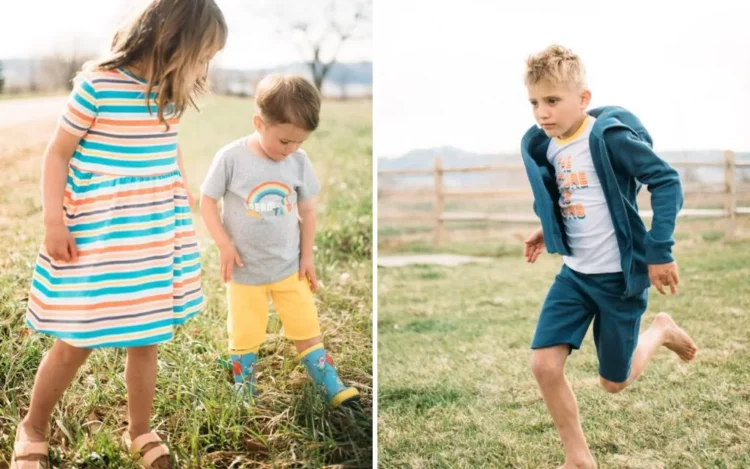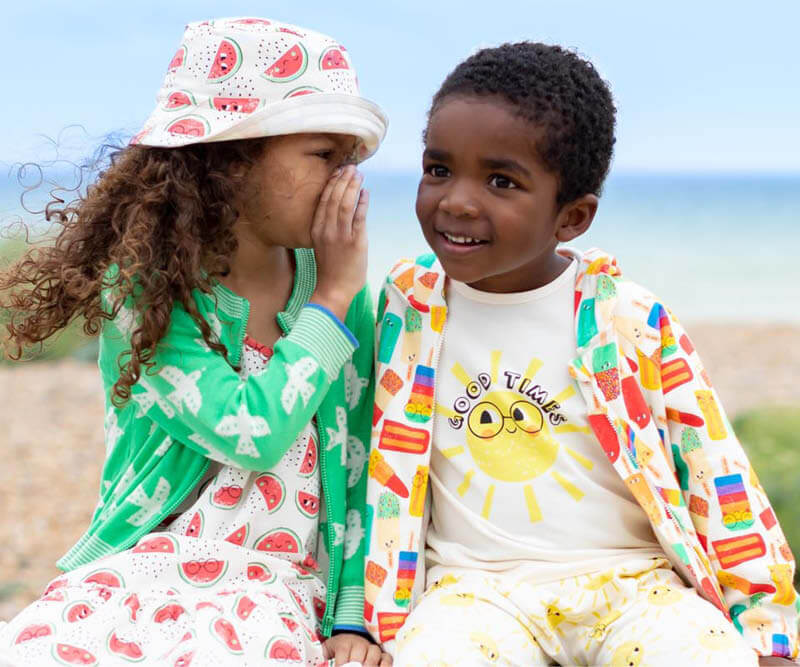In today’s rapidly evolving world, the term “sustainability” is more than just a buzzword—it’s a call to action. When it comes to clothing, especially for our children, sustainability is a choice that can shape the future.
Sustainable kids’ clothing is not just about fashion; it’s about making eco-friendly choices that benefit both our children and the planet. By opting for sustainable alternatives, we’re not only ensuring our kids wear safe, quality garments but also teaching them the importance of caring for the environment.
Environmental Impact of Traditional Clothing

The fashion industry, particularly fast fashion, has long been criticized for its detrimental environmental impact. From the vast amounts of water consumed in production to the harmful chemicals used in dyes, traditional clothing production leaves a significant carbon footprint.
Fast fashion, with its rapid turnover of cheap garments, contributes to excessive waste as clothes are discarded after only a few years. The repercussions of this wastefulness are felt in overflowing landfills and polluted waterways. By understanding these impacts, we can better appreciate the need for sustainable alternatives.
Benefits of Sustainable Clothing
Choosing sustainable kids’ clothing is a transformative step towards a brighter, greener future. These eco-friendly options not only look and feel great but also play a pivotal role in reducing the carbon footprint associated with garment production. By conserving vital resources like water and energy, and by minimizing waste, sustainable kids clothing acts as a protective shield for our planet and the future of our children.
It’s a vision of a world where clothing production harmoniously coexists with nature, where garments are crafted without straining or depleting our planet’s precious resources. This isn’t just fashion; it’s a promise of sustainable living.
Materials and Fabrics

At the heart of sustainable kids’ clothing lie eco-friendly materials, a testament to innovation and environmental responsibility. Take organic cotton, for instance. Unlike its conventional counterpart, it’s cultivated without harmful pesticides or synthetic fertilizers, ensuring not only safer garments for kids but also a significantly cleaner environment.
Hemp, often dubbed the ‘miracle crop’, stands out for its resilience, requiring minimal water and pesticides. Then there’s bamboo, a sustainable superstar, celebrated for its rapid growth, biodegradability, and soft texture. These materials, championed by eco-conscious brands, not only mitigate environmental harm but also promise comfortable, breathable fabrics tailored for children’s delicate skin.
Chemical-Free Dyes
While the vibrant colors of children’s clothing captivate our eyes, they often conceal a less colorful truth. Many conventional synthetic dyes, widely used in the fashion industry, harbor harmful chemicals that can leach into the skin, posing potential health risks. In stark contrast, sustainable clothing brands have turned the tide by prioritizing natural, non-toxic dyes derived from plants and minerals.
These eco-dyes ensure that the garments remain safe, gentle, and hypoallergenic against a child’s tender skin. By consciously choosing chemical-free dyes, parents not only embrace aesthetics but also shield their children from potential allergens and skin irritants.
Ethical Manufacturing

Sustainable clothing transcends mere environmental considerations; it delves deep into the realm of ethics and human rights. Brands that wear the badge of sustainability with pride go the extra mile to ensure fair wages, humane working hours, and safe, dignified working conditions for their artisans and employees.
They stand firmly against the dark shadows of child labor, ensuring that garments meant for children aren’t tainted by the sweat and tears of child workers. By consciously supporting these brands, consumers don’t just buy clothes; they champion a movement, advocating for human rights, ethical business practices, and a world where fashion is free from exploitation.
Longevity and Durability
Sustainable kids’ clothing is synonymous with quality. These garments, meticulously crafted, are designed to withstand the test of time, making them perfect for the rough-and-tumble world of active children. Investing in such high-quality pieces translates to fewer replacements over the years.
This not only means reduced consumption and waste but also significant savings for parents. Furthermore, the inherent durability of these clothes allows them to be passed down to younger siblings or even resold, promoting a circular fashion economy that benefits both the environment and consumers.
Size-Adjustable Designs

Children’s growth spurts are a testament to the fleeting nature of childhood. They often outgrow their clothes within mere months. Recognizing this, sustainable brands have innovatively introduced size-adjustable designs.
Features such as expandable waists, extendable hemlines, or adjustable straps ensure that garments adapt and grow with the child. This ingenious approach extends the garment’s usability, offering parents value for their money and reducing the need for frequent shopping trips, thereby promoting sustainability.
Minimalist Wardrobe Approach
Embracing a minimalist wardrobe is not about sacrificing style or individual expression. Instead, it champions the idea of curating a collection of versatile, high-quality pieces that seamlessly blend with each other. For children, this translates to fewer items in their closets, each serving multiple purposes.
This approach not only reduces consumption but also simplifies daily outfit choices. By promoting sustainable fashion habits from a young age, we’re setting the stage for a future generation that values quality over quantity.
Supporting Local and Artisanal Brands

In an era of globalization, local and artisanal brands offer a refreshing touch of authenticity. These brands, with their deep-rooted commitment to sustainability, often produce limited batches, ensuring a focus on quality over mass production. Supporting them goes beyond just making a purchase.
It’s a stand against excessive carbon emissions from international shipping and a nod to boosting local economies. Furthermore, buying locally fosters community ties, creating a sense of unity and shared responsibility toward a sustainable future.
Teaching Kids about Sustainability
Cultivating eco-conscious values is a gift every child deserves. From a tender age, parents have the opportunity to engage in age-appropriate conversations about sustainable fashion. By teaching kids the profound impact of their choices, we’re empowering them to be responsible global citizens.
Activities such as reading eco-themed stories, upcycling old clothes into fun crafts, or even planting a tree can foster deep-rooted respect for the environment. As they grow, these values will guide their decisions, ensuring a brighter, greener future for all.
Future-Focused Choices
Sustainable kids’ clothing is more than a trend—it’s a commitment to a brighter future. By making mindful wardrobe choices for our children, we’re not only ensuring their well-being but also taking a stand for our planet. Let’s embrace sustainable fashion, one garment at a time, and pave the way for a greener tomorrow.







